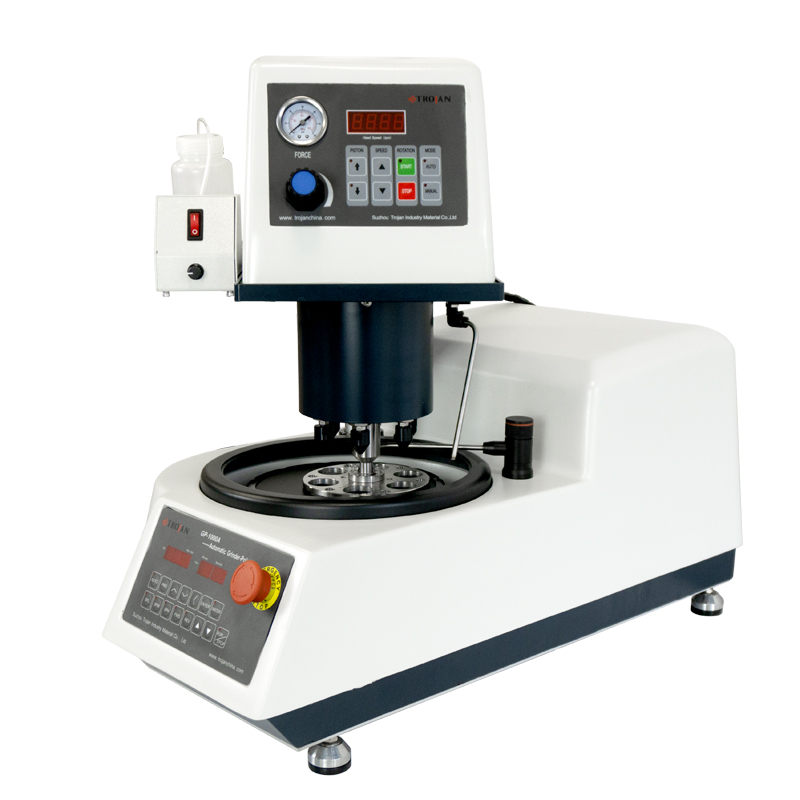Metallographic grinding and polishing machines offer several advantages over manual methods in preparing metallographic samples for microscopic analysis. These machines are specifically designed to automate and streamline the grinding and polishing processes, providing consistent and reproducible results. Here are the key advantages of using metallographic grinding and polishing machines:
Consistency and Reproducibility:
One of the most significant advantages of using metallographic grinding and polishing machines is the consistency they offer. These machines can precisely control the grinding and polishing parameters, such as speed, pressure, and time, ensuring that each sample receives the same treatment. As a result, the finished samples are more uniform, leading to reliable and reproducible results during microscopic examination.
Time Efficiency:
Metallographic grinding and polishing machines are much faster than manual methods. They can process multiple samples simultaneously, reducing the time required to prepare a batch of samples for analysis. Automated machines can perform grinding and polishing steps continuously without breaks, significantly increasing the throughput and overall efficiency of the sample preparation process.
Reduced Human Errors:
Manual grinding and polishing are prone to human errors, such as uneven pressure application, inconsistent movements, and variations in the grinding direction. These errors can lead to non-uniform sample surfaces, which may affect the accuracy of the microscopic examination. Metallographic machines, being automated, minimize human errors and ensure that each sample undergoes the same controlled process, enhancing data reliability.
Precision and Control:
Metallographic machines provide precise control over the grinding and polishing parameters, allowing operators to set specific conditions for different materials and sample types. This level of control ensures that samples are processed to the desired specifications, achieving the desired surface finish and edge retention, which is crucial for accurate microstructural analysis.
Cost-effectiveness:
While
metallographic grinding and polishing machines may have an initial investment cost, they offer long-term cost-effectiveness. The automation and efficiency they provide lead to reduced labor costs, increased productivity, and minimal consumable wastage. Over time, this can result in significant savings for laboratories and research facilities that regularly perform metallographic sample preparation.

Safety:
Manual grinding and polishing can be physically demanding and may expose operators to potential hazards, such as repetitive strain injuries. Metallographic machines reduce the physical strain on operators, making the sample preparation process safer and more comfortable. Additionally, some machines come equipped with safety features, such as interlocking guards and automatic shut-off mechanisms, further enhancing workplace safety.
Versatility:
Metallographic grinding and polishing machines are designed to handle a wide range of materials and sample sizes. They can accommodate different shapes, thicknesses, and types of samples, making them suitable for various applications across industries like metallurgy, material science, quality control, and failure analysis.
Customization and Automation:
Advanced metallographic machines often come with programmable features, allowing users to create customized grinding and polishing sequences for specific materials or research requirements. The ability to automate the entire process, from rough grinding to final polishing, enhances efficiency and frees up operators to focus on other tasks.
Metallographic grinding and polishing machines offer numerous advantages over manual methods in preparing metallographic samples for microscopic analysis. The consistency, reproducibility, time efficiency, reduced human errors, precision, and control they provide contribute to more reliable and accurate results. Additionally, the cost-effectiveness, safety features, versatility, and potential for automation make these machines indispensable tools in modern laboratories and research facilities involved in material analysis, quality control, and research applications.

